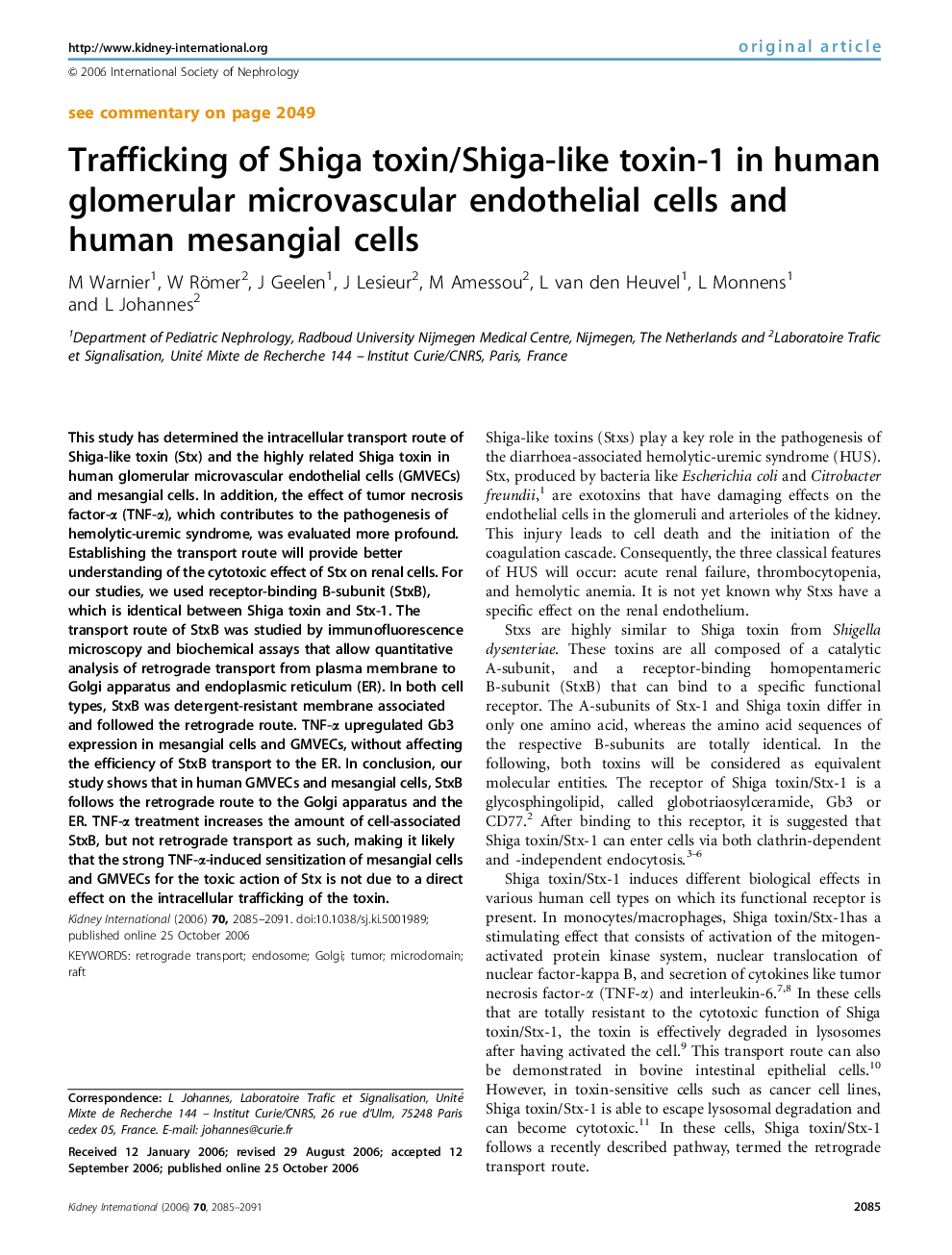| Article ID | Journal | Published Year | Pages | File Type |
|---|---|---|---|---|
| 3887499 | Kidney International | 2006 | 7 Pages |
This study has determined the intracellular transport route of Shiga-like toxin (Stx) and the highly related Shiga toxin in human glomerular microvascular endothelial cells (GMVECs) and mesangial cells. In addition, the effect of tumor necrosis factor-α (TNF-α), which contributes to the pathogenesis of hemolytic-uremic syndrome, was evaluated more profound. Establishing the transport route will provide better understanding of the cytotoxic effect of Stx on renal cells. For our studies, we used receptor-binding B-subunit (StxB), which is identical between Shiga toxin and Stx-1. The transport route of StxB was studied by immunofluorescence microscopy and biochemical assays that allow quantitative analysis of retrograde transport from plasma membrane to Golgi apparatus and endoplasmic reticulum (ER). In both cell types, StxB was detergent-resistant membrane associated and followed the retrograde route. TNF-α upregulated Gb3 expression in mesangial cells and GMVECs, without affecting the efficiency of StxB transport to the ER. In conclusion, our study shows that in human GMVECs and mesangial cells, StxB follows the retrograde route to the Golgi apparatus and the ER. TNF-α treatment increases the amount of cell-associated StxB, but not retrograde transport as such, making it likely that the strong TNF-α-induced sensitization of mesangial cells and GMVECs for the toxic action of Stx is not due to a direct effect on the intracellular trafficking of the toxin.
